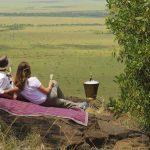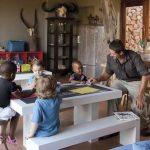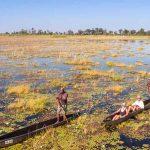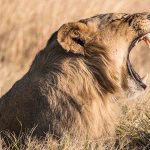North Island, in the Seychelles, is one of the world’s most expensive barefoot retreats – a magnet for the rich and beautiful, and the reported honeymoon destination for Prince William and Kate Middleton.
North Island in the Seychelles has made a name for itself as the leading proponent of “barefoot luxury”. From the half-unbuttoned shirt of the absurdly good-looking general manager, Martijn Brouwer, to the cowrie-shell fronds that act as bathroom doors, this is a place designed to appeal to rich people and members of the royal family, who find pomp unrelaxing.
On North (as its familiars call it), there are no mealtimes or even menus: food is discussed with an executive chef on arrival. Choosing a wine means wandering into a well-stocked cellar and picking one out. Every diving or fishing expedition is arranged just for you.
There’s no signing for anything – or indeed signs. The only rules are along the lines of “Don’t sit on the tortoises”. To prevent hatching turtles heading in the wrong direction, all lights are banned near beaches.
The idea is to live an idealised Robinson Crusoe existence, exploring the island by bike or in your own buggy, with 100 discreet members of staff ready to make it easy for you in any way they can, whether by amusing the children (handy, no doubt, when Brad and Angelina came to stay) or setting up a moonlit picnic in a particularly romantic spot.
The artful illusion of total casualness carries through from the four-postered bedrooms with pillars made out of driftwood to the showers constructed from pieces of bamboo to create the impression of improvised rainwater bathing.
This relaxed, hippy approach is the main reason why people are prepared to spend nearly £3,000 a night to stay in one of the 11 villas on the island. Exclusivity is the other reason why tired rock and film stars choose to chill out on this granite outcrop in the Indian Ocean: there’s no landing dock, so virtually the only way for visitors to get on and off the 500-acre island is via helicopter.
Rubberneckers are not welcome. When the management asked visitors recently about building a few more villas on West Beach, the island’s second long sandy strand, they were dissuaded. “Guests said they would rather pay more and have the place to themselves,” says Brouwer, who finds North Island idyllic, even by the standard of Richard Branson’s Necker, which he used to run.
But it isn’t simply luxury and privacy that guests are paying for. There is another reason why the prices are so high and yet guests return again and again, sometimes hiring the whole place for a private party. This has nothing to do with the tastefully faded bottle-green velvet sofas, the personalised outdoor pools looking out over the beach or even the absurdly beautiful setting for the outdoor, leafy spa, which is open whenever you wish for a massage.
The unique selling-point of the North Island experience is that guests can feel good about themselves while having a lovely time. They can enjoy the air conditioning, an allocation of 34 towels per room, and cocktails on tap, knowing that their money is funding an important ecological experiment which could save several endangered species from extinction.
An almost deserted island in the Seychelles might appear to be one of the least challenged environments in the world. North Island has been protected from the contemporary hazard of the tasteless Arab palaces which are blighting parts of Mahé, but nearly 200 years of human habitation have affected it in other ways.
In that time, the plants, birds and animals that originally dwelt on the island have been gradually ousted by rapacious imported flora and fauna. “When we first came to the island it was over-run by feral rats, cats, pigs and cows,” says Andy Payne, chief executive of Wilderness Safaris, which bought the island for US$5 million in 1997, “and 95 per cent of the vegetation consisted of exotics – meaning non-indigenous plants.”
While wondering what to do with it, he visited Cousin, another island in the archipelago which is a private nature reserve. With him he took a scientist who pointed out that there were only 14 magpie robins on the island and 52 in the whole of the Seychelles.
Those birds were running out of habitat. Several other species exclusive to the Seychelles, Payne learnt, were in a similar state of near-extinction, including the black parrot, blue pigeon and black paradise flycatcher. “At that point, he thought: “Let’s create a Noah’s Ark.”
Wilderness has a 40-year history of running top-end safaris in a host of southern African countries, but this was a new departure. Never before had they tried to alter an environment which had been subtly wrecked by human influences. But then never before had they owned an island where it was possible to tinker with the environment in a closed experiment.
Payne has thrown himself behind the project and speaks with infectious passion of how it has changed his outlook on life – and tourism. “I get quite emotional when I talk about this little piece of land,” he says. “It breathes, it moves. You have to nurture and treat this island carefully. It’s an extraordinary destination, and I don’t just mean from the comfort point of view.”
Apart from the fruit bats which glide around by daylight, spotting ripe mangoes, there are no indigenous mammals on the Seychelles. The Beaufond family who acquired the island in 1826 introduced cash crops and domestic animals, both of which ran wild after the plantation closed in 1977.
But the worst problem faced by the new owners was rats. Black rats arrived on ships and caused havoc by eating the young of the giant turtles and tortoises that made their nests in the sand. Rats also devoured the eggs of birds which nest on the ground in this hitherto predator-free environment.
Relax. The rats have gone. It wasn’t easy, Payne explains, because black rats can climb trees. But, with the help of pesticides and helicopters, they were shown the door some seven years ago, allowing the hotel to take in its first guests in 2003. Since then, says Payne, every delivery has been closely inspected for unwanted passengers. “It would take only one pregnant female…”
No rats, thankfully, jump out of the helicopter on which I arrive to inspect the island. It’s a wet day in the tropics, so some of the guests have chosen to stay in their rooms eating popcorn and watching old movies. Another couple is enjoying the well-stocked library.
I feel I have the place to myself, but then I suspect that’s true whenever you visit. At most you will run into one or two other couples or families. People grow to love this place because they feel it belongs to them.
It is also wonderfully strange. At first it is easy to overlook the big grey boulders that stud the grass. Then one of them starts to move, and you realise they are some of the island’s giant tortoises, which like to spend their days sitting under guava bushes waiting for ripe fruit to drop.
The largest of the 100-strong tortoise population is Brutus, one of the oldest and heaviest tortoises anywhere in the world, tipping the scales at 30 stone. “Today he will probably be in the swamps, or chasing a female,” says biologist Linda van Herck, who has lived on North for seven years.
As she scoots around in a golf buggy, she enthuses about the island. In terms of biodiversity, the Seychelles are almost as important as the Galapagos, the other archipelago where giant tortoises and turtles are found in substantial numbers. “Tortoises make a terrible noise when they mate. It usually lasts long enough for me to be able to go and get guests who want to see. You can tell the male tortoises because they have concave undersides, which means they don’t fall off so often.
If they do that, they can’t right themselves.”
I hear no tell-tale banging of animated dustbin lids but in another way I’m in luck, as two nests of turtles are currently hatching out in van Herck’s office. “We don’t interfere with nature,” she says, bumping along the path towards them, “but we do sometimes give it a helping hand. We moved these two nests because they were too far down the beach and would have been washed away.”
Sure enough, in each of two polystyrene boxes is a heaving heap of sand. Each is a nest for 60 to 70 hawksbill turtle eggs. Some of the babies are just poking out of their table-tennis-ball eggs. Others are crawling around, usually heading upwards towards the light.
They weigh less than one-third of an ounce at the moment, and will grow to about nine stone. One night the turtles will be released on the beach to follow the shafts of moonlight into the ocean. Linda, and any guests who volunteer, won’t be allowed to help them on their way, but they can keep crabs at bay.
North Island has had considerable success in creating a sanctuary for these giant reptiles because, now the rats are gone, it is relatively easy to give them a home and a start in life. Recently, 35 were re-homed from other islands where they weren’t so safe.
Assisting species of birds that are threatened with extinction is more tricky. There’s little anyone can do for the seabirds, now that the rats have gone, except wait. Given their eight-year breeding cycle, van Herck is hoping that some nest-builders will find North a safe base. Staff and guests are on the lookout for white-tailed tropicbirds, wedge-tailed shearwaters, noddys and swift terns.
With land-based birds, van Herck and her assistants can be more proactive. Before they can reintroduce indigenous species, first the vegetation has to be right for the insect life on which the birds feed. So far, 60 acres have been returned to something like their natural state and 100,000 trees planted.
These include the coco de mer palms, with their erotic 55lb nuts, unique to the Seychelles, and the takamaka tree, which makes excellent furniture as well as a good base for bird life. In the process, “Justin the Decoconutter” has been employed full-time pulling up the coconuts that seed themselves with abandon all over the island.
So far the team on North has reintroduced several species, including the Seychelles white-eye. In a few years’ time, once the takamakas have grown, the magpie robins will be the last to arrive, pair by pair, on Noah’s Ark. But that won’t be where the project stops. The day after my visit, Andy Payne plans to introduce staff to phase two of his eco-scheme for the island. “North Island has taught us you can do well out of doing good. The next stage is to build in sustainability. We will be looking at water and energy resources.”
The energy costs of keeping guests in extreme comfort are high, especially with the price of diesel rising, so he will be looking at alternative sources of electricity, beginning with wood-burning generators fuelled by the casuarina trees, imported from Australia, which have spread all over the island.
That fuel source should allow them to wash piles of towels at all hours for the five to 10 years until photovoltaic-cell technology makes solar power viable. He will also be looking at the freshwater table, which is vulnerable to being poisoned by an influx of salt water, should it sink too low.
“Whatever you do, you have to remain economic,” Payne concludes. “I don’t believe you can sell a resort like this purely on the basis of it being green. You do it because you want to do it. But it is an important reason why people keep coming back to us.”
North Island, Seychelles: barefoot luxury in eden – By Cassandra Jardine 20 May. Reproduced from The Telegraph Ultra Travel






